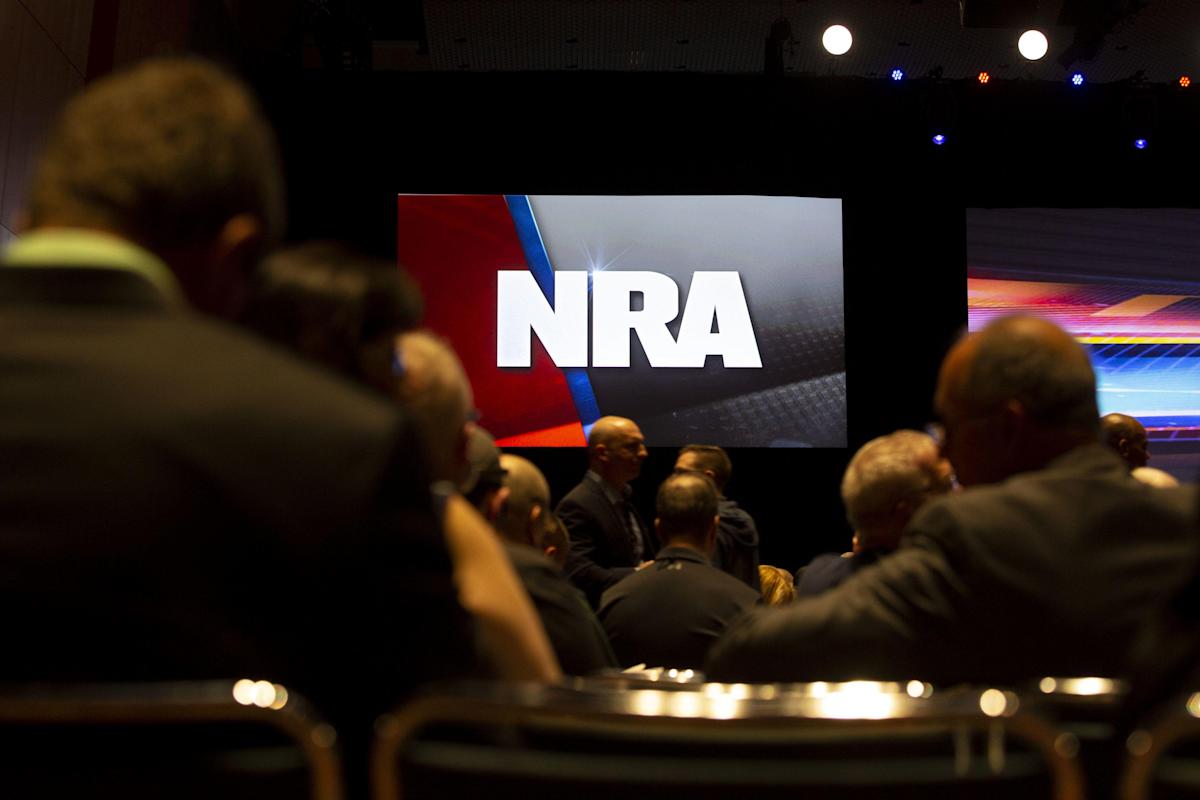
(Bloomberg) — A diminished National Rifle Association opens its annual convention this week in Houston — confronted with falling revenues, fierce legal challenges and renewed criticism for defending access to weapons used in a spate of deadly shootings.
Most Read from Bloomberg
But it’s still a potent enough player in American politics to draw to its convention former President Donald Trump and Texas Senator Ted Cruz, both beneficiaries of the organization’s generous political spending.
The four-day event, billed as the “largest gathering of NRA members and Second Amendment supporters in the country,” comes after at least 19 children and two adults were gunned down Tuesday in an elementary school in Uvalde, Texas.
The cancellation of the past two annual meetings ate into revenue for the group which, along with mounting legal bills, has forced cuts to staff and member programs, leaving it with a smaller on-the-ground presence than in previous years.
The NRA as an organization is weaker and less powerful politically than it was, but its real strength is its army of members willing to engage in politics, said Matt Grossmann, a political science professor at Michigan State University who has studied the NRA.
“The mobilized base of gun owners and the symbolic importance of guns in conservative politics, both of which the NRA helped to build, will continue and are stronger than the organization itself,” he said.
An NRA representative didn’t immediately respond to an email and a voice message seeking comment.
After peaking the year Trump was elected, the NRA’s revenues fell 22% over the ensuing four years to $285 million in 2020, the most recent year for which data is available. Its legal fees hit a record that year of $40 million. Based on preliminary numbers, revenues are estimated to have slipped further in 2021 and legal expenses to have hit another peak, according to tax filings and internal documents reviewed by Bloomberg.
The legal battles erupted with reports in 2019 of lavish spending by its longtime boss, Wayne LaPierre, and other senior officials that sparked internal turmoil leading to the ouster of its president, Oliver North, and the departure of its top lobbyist, Chris Cox.
The NRA, LaPierre and other executives were sued by New York Attorney General Letitia James in 2020 over allegations they’d misused millions of dollars of the nonprofit’s assets. Facing the prospect that it could be dissolved, the NRA sought to avoid James’s suit by using a bankruptcy filing as part of a bid to move its charter from New York to Texas.
After a federal judge declared that the NRA had filed its bankruptcy claim “not in good faith,” it found itself again facing the prospect of a New York trial. Although a state judge dismissed the prospect of disbanding it as a result of a James victory, it could force the group to replace LaPierre and the rest of its leadership.
Trump’s victory in 2016 also dampened the NRA’s ability to raise money off the prospect of imminent threats to gun rights. Its internal conflicts, competition from state groups, and its increasing partisanship diminished the NRA’s clout, said Richard Feldman, a former lobbyist for the organization. “The NRA in the last 20 years has really morphed into the National Republican Association,” Feldman said.
The gun-rights group has remained active in politics, even though its spending has dropped in recent cycles from a peak of $54.4 million in 2016 — a sum that included $31 million spent to help elect Trump, according to OpenSecrets.
As the group’s legal problems mounted, its spending dipped to $9.6 million in the 2018 midterms, but rebounded to $29.4 million in 2020, with most of that money backing losing campaigns. It spent $16.6 million backing Trump, and $5.9 million supporting Republicans in the runoffs for two Georgia Senate seats won by Democrats Jon Ossoff and Raphael Warnock.
The group logged more wins in 2020 in races where it spent less. It backed 109 successful House candidates, spending an average of $20,100, according to OpenSecrets, a non-profit that monitors campaign donations.
The NRA has focused more on achieving or maintaining Republican majorities in the last few cycles than on rewarding the most ardent proponents of gun rights. It’s spent heavily in battleground states such as North Carolina and Florida and in races with endangered Democratic incumbents, but little in relatively safe Republican states like Texas. When challenger Beto O’Rourke raised $34 million more than Ted Cruz in 2018, the NRA spent just $91,000 on the incumbent’s behalf.
“You’re going to save most of your fire for the races that are going to decide who controls the gavels in Congress,” said Michael Beckel, research director at the bipartisan political reform group Issue One. He added that such strategic spending enhances a special interest’s influence with the party.
(Everytown for Gun Safety, which advocates for universal background checks and gun-safety measures, is backed by Michael Bloomberg, founder and majority owner of Bloomberg News parent company Bloomberg LP.)
Most Read from Bloomberg Businessweek
©2022 Bloomberg L.P.




